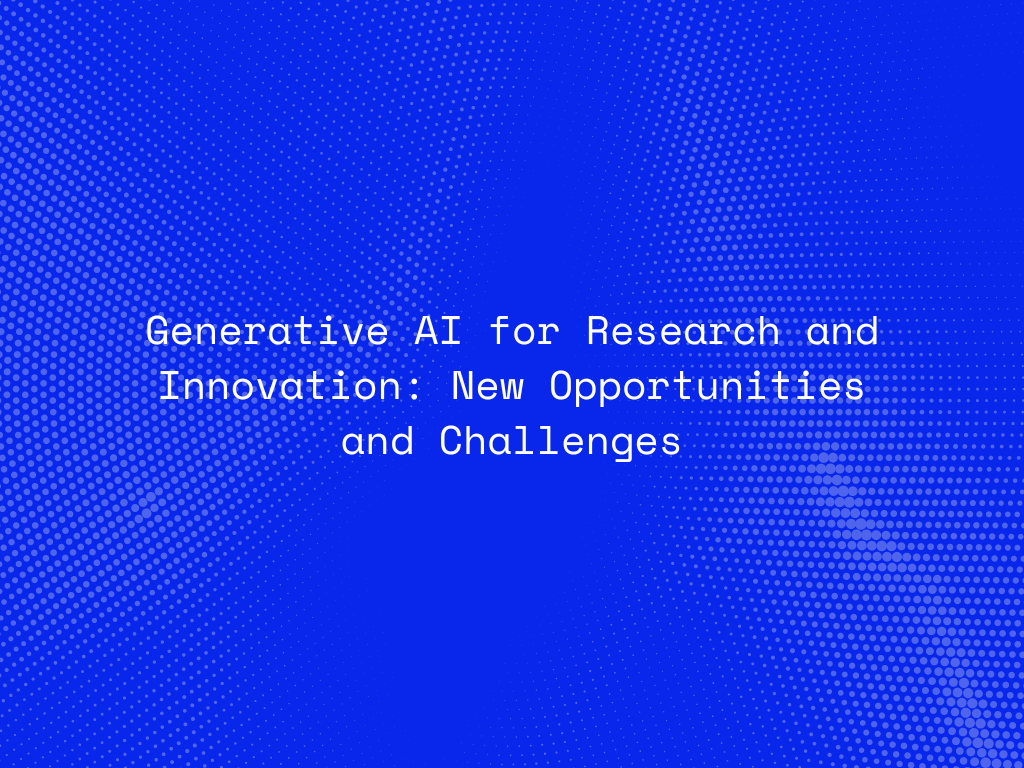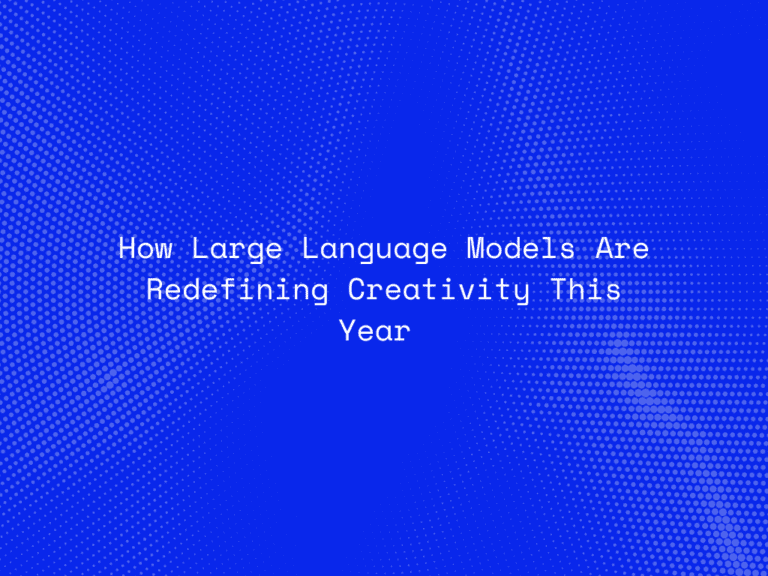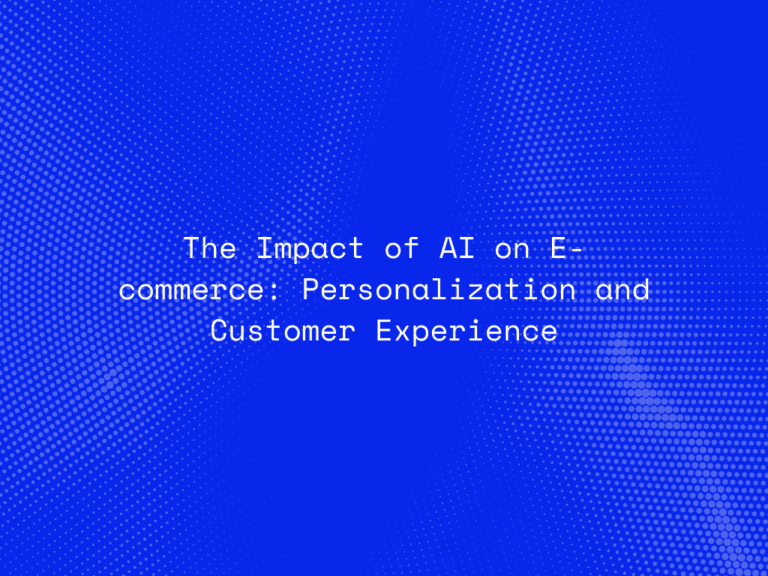Generative AI has emerged as a transformative force in the fields of research and innovation, unlocking new opportunities for discovery, creativity, and problem-solving. From automating repetitive tasks to generating novel hypotheses, generative AI models are reshaping how researchers approach complex questions and how innovations are developed across industries.
However, along with the immense potential comes a set of unique challenges—ethical, technical, and practical. In this blog, we’ll explore the new opportunities generative AI presents for research and innovation, as well as the key challenges researchers and innovators must navigate.
What Is Generative AI?
Generative AI refers to a class of artificial intelligence models designed to generate new data or content based on patterns learned from existing datasets. Unlike traditional AI models, which primarily classify or predict based on input data, generative AI can create new content, whether that’s text, images, music, or even designs.
Some of the most well-known generative AI models include GPT (Generative Pre-trained Transformer) for text, DALL-E for images, and AlphaFold for protein folding predictions. These models leverage vast datasets and advanced algorithms to generate novel, realistic outputs that were once thought to be solely within the domain of human creativity.
Connect With Us
Opportunities for Generative AI in Research and Innovation
Generative AI opens up a wide range of possibilities in research and innovation, from accelerating discovery to fostering creativity in ways that were previously unimaginable.
1. Accelerating Scientific Discovery
Generative AI models can analyze vast amounts of scientific literature and data, making it possible to generate new hypotheses or solutions that might not be immediately obvious to human researchers. For instance, generative models have been used in drug discovery, where they generate potential molecular structures that could lead to new medications. By automating these complex tasks, AI can significantly reduce the time required for experimentation and trial-and-error processes.
2. Automating Data Synthesis and Analysis
In fields like genomics and climate science, researchers are often overwhelmed by massive datasets. Generative AI helps by synthesizing data, identifying patterns, and generating predictive models that provide new insights. For example, AlphaFold, a generative AI model, has revolutionized protein folding research by predicting protein structures with remarkable accuracy, accelerating research in areas such as drug development and biotechnology.
3. Innovation in Design and Engineering
Generative AI is driving innovation in engineering and design by creating optimized designs that human engineers may not have envisioned. In industries like aerospace and automotive, generative design models can generate prototypes that meet specific design constraints (e.g., weight reduction or structural integrity) while optimizing for performance. This process leads to faster product development cycles and more innovative designs.
4. Creative Problem-Solving
In addition to automating research tasks, generative AI can assist in creative problem-solving by proposing novel solutions based on existing data. This is particularly useful in interdisciplinary research, where insights from one field can be applied to another. For example, generative AI can suggest cross-disciplinary innovations, such as applying machine learning algorithms developed for natural language processing to analyze genetic data.
5. Enhancing Collaboration and Communication
Generative AI tools, such as language models and translation services, facilitate communication and collaboration across diverse research teams. AI-powered tools can summarize research papers, translate scientific findings into multiple languages, and even generate drafts of research papers or grant proposals. This accelerates the process of disseminating knowledge and encourages global collaboration in fields like climate change, medicine, and renewable energy.
Challenges of Generative AI in Research and Innovation
Despite its immense potential, generative AI introduces several challenges that need to be addressed to fully realize its benefits.
1. Ethical Concerns
Generative AI poses ethical concerns, particularly related to the authenticity and ownership of AI-generated outputs. In fields like academic research, there is a growing debate about whether AI-generated content can be considered original or if it constitutes plagiarism. Moreover, the ability of generative AI to produce realistic but fabricated content raises concerns about misinformation and data manipulation.
In research, the unchecked use of generative AI could lead to the generation of incorrect or biased hypotheses, which could mislead scientific endeavors. Bias in training data remains a critical issue, as generative models can reflect and amplify societal biases, resulting in skewed or unethical outcomes.
2. Data Quality and Availability
Generative AI models rely on high-quality data to function effectively. In certain fields, such as healthcare or climate science, obtaining sufficient amounts of clean, relevant data can be a major challenge. Incomplete or biased datasets can result in inaccurate predictions or misleading outputs, which could undermine the reliability of research findings. Researchers must ensure that AI models are trained on comprehensive, diverse datasets to mitigate the risks of poor data quality.
3. Interpretability and Transparency
The black-box nature of many generative AI models can pose significant challenges when it comes to transparency and interpretability. In scientific research, understanding how a model arrives at its conclusions is crucial for validating results and ensuring reproducibility. If researchers are unable to explain how a generative AI model arrived at a particular hypothesis or design, it can be difficult to trust the results or incorporate them into further research.
4. Over-Reliance on AI
There is a risk that researchers and innovators may become overly reliant on generative AI, potentially diminishing the role of human intuition and creativity. While generative AI can automate many processes, it is not a substitute for human judgment, particularly in the early stages of research or when navigating complex ethical or philosophical questions. Ensuring a balanced approach, where AI augments rather than replaces human intelligence, is key to avoiding over-reliance on these models.
5. Regulatory and Legal Challenges
The legal and regulatory frameworks surrounding the use of generative AI in research and innovation are still in their infancy. Issues related to intellectual property, data privacy, and accountability remain unresolved, particularly when AI-generated outputs become part of intellectual property claims. Ensuring that research involving generative AI adheres to evolving regulations is a complex challenge that requires collaboration between lawmakers, researchers, and technology developers.
Connect With Us
Best Practices for Leveraging Generative AI in Research
To overcome the challenges and fully capitalize on the potential of generative AI, researchers and innovators can adopt several best practices:
1. Ethical AI Guidelines
Researchers should develop and adhere to strict ethical guidelines for the use of generative AI. These guidelines should address issues such as authenticity, bias mitigation, and transparency to ensure that AI-generated content contributes positively to research and innovation.
2. Human-in-the-Loop Approach
A human-in-the-loop approach, where human oversight guides the AI’s processes, can help maintain a balance between AI-driven automation and human creativity. In this approach, AI generates content or ideas, but human researchers validate, refine, and interpret the outputs, ensuring that the final results meet ethical and quality standards.
3. Diverse and Inclusive Training Data
Using diverse and representative datasets is essential to minimize bias and ensure that generative AI models provide fair and accurate results. Researchers should prioritize collecting data from a wide range of sources and ensure that underrepresented groups are included in the training process to avoid perpetuating biases.
4. Transparency and Interpretability
Researchers should prioritize the development and use of generative AI models that are interpretable and transparent. This involves creating models that allow researchers to trace the decision-making process and explain the model’s outputs. Open research practices, such as publishing model architectures and training methodologies, can also enhance transparency.
The Future of Generative AI in Research and Innovation
The future of generative AI in research and innovation is promising, with models continuing to improve in their ability to generate novel content, predict outcomes, and solve complex problems. As AI technologies become more integrated into research workflows, we can expect accelerated breakthroughs in fields like biomedicine, materials science, and environmental research.
However, the future also depends on the responsible development and application of generative AI. Researchers, innovators, and policymakers must work together to ensure that the benefits of generative AI are realized while mitigating the risks and challenges associated with its use.
Conclusion
Generative AI presents unprecedented opportunities for research and innovation, driving new discoveries and automating complex processes. However, these opportunities come with challenges, including ethical concerns, data quality issues, and the need for transparency. By adopting best practices and remaining mindful of the risks, researchers can harness the full potential of generative AI to push the boundaries of knowledge and drive innovation in a responsible and sustainable way.




